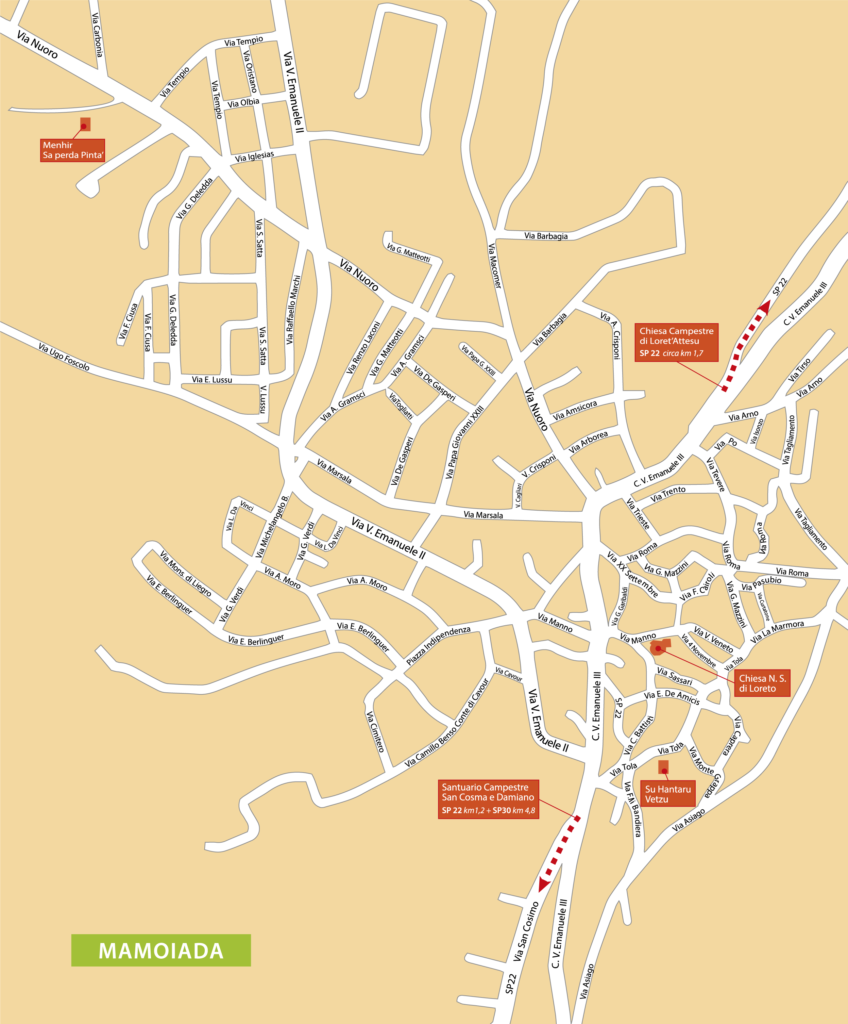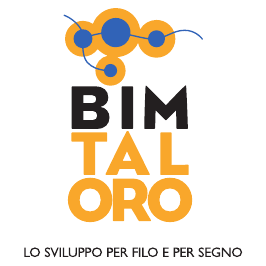The Sanctuary of Santi Cosma e Damiano
The country Sanctuary of Santi Cosma e Damiano, which the inhabitants of Mamoiada also call Sanctuary of San Cosimo, is located in a flat area of the town’s countryside. This area is rich in springs – one of them bubbling up from the courtyard of the Ospizio dei Novenanti – renowned for their incredibly pure water. The church, located at the centre of the building complex, is bracketed by the so-called cumbessias (small houses used by pilgrims in the past). Even though an inscription on the bell hanging in the small bell gable reads the year of 1666, several architectural and stylistic elements allowed scholars to date the church between the 7th and 8th century AD, making it the oldest church in Sardinia.
The facade is quite simple: it just features an arched portal and an oculus without a rose window. The exterior is surmounted by a small bell gable with a tiled pitched roof, which is topped by a small cross. The walls are plastered and painted white. The structure, with its square plan, single nave, elongated apse and rib vault, has many features typical of the Byzantine period, such as the niche in pink trachyte and the frescoes over the high altar (the same decoration appears on the support wall): this is in fact the oldest part of the building. The niches created by the pillars look like small chapels, and you might notice that the original floor in cotto tiles slopes towards the main entrance.
Above the high altar is also another niche housing two statues in alabaster of Saints Cosmas and Damian, the saint patrons of Mamoiada: the two brothers, physicians, and martyrs are depicted with a severe face and a beard and dressed after the Eastern style. The inscription reads: “S. Cosma/S. Damianus ex legato R. di Sebastiani Casula / olim rectoris de Mamojada / haeredes fieri fecerunt”. Other two smaller statues, which are usually used for the procession, are placed on a wooden base near one of the two side entrances. All year round the church displays the replicas of some panels in glazed ceramic of the Via Crucis, which were made by artist José Cotanda Aguillela in the factory of Alcora, in Castellon de la Plana (Spain), in the early 20th century. The original panels, which in 1998 were used by Pope John Paul II at the Colosseum for the celebration of Good Friday, replace the copies during the end of summer festival. Other noteworthy religious objects are two refined brass offering dishes with a diameter of about 38 cm: these original pieces date back to the late 15th century and were made in Nuremberg.
As is typical with the Eastern style, the sanctuary is situated at the centre of a religious complex, which can be accessed through two wrought iron gates that were made quite recently. The building is surrounded by porticos, where street vendors would sell their products, and approximately 60 cumbessias. Cumbessias are small dwellings, made of stone masonry and featuring a gable roof with Monk and Nun tiles, that are plastered and painted white. They have one or two rooms, one or two floors and one or two windows, and together they form a sort of block. Some of them are private property. From September 18 to September 27, these dwellings are occupied by ‘novenanti’, people who come to celebrate the highly anticipated feast of Saints Cosmas and Damian, a nine-day period of prayer and celebrations; however, they are available all summer starting in July.
In the middle of all cumbessias there is a two-storey priory: the ground floor houses two large rooms and a kitchen that is always open to pilgrims. The building is in pristine condition and has undergone several major improvements over the years thanks to the priors and to the local community’s generosity.
Text by Cecilia Mariani

 BIM TALORO
BIM TALORO